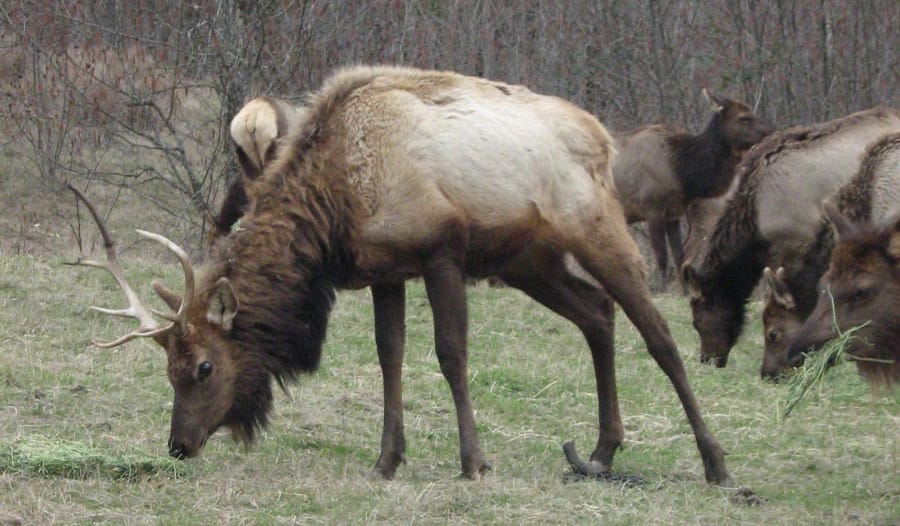“I’ve got the skills and the experience, and hopefully I can make a difference,” said Wild. I’m very passionate about elk.”
Wild graduated from Colorado State University’s College of Veterinary Medicine in 1990. She went on to earn a Ph.D. degree in zoology in 2002 from the same university.
Well known among wildlife biologists and researchers nationwide, she has authored or coauthored over 50 scientific papers published in peer-reviewed journals.
Disease on the move
Hoof disease has spread rapidly over Southwest Washington the last 10 years. The outbreak started within the Willapa Bay and Mount St. Helens elk herds. It has spread to other herds in Washington and has shown up in Oregon.
Infected elk recently found near Trout Lake in Klickitat County mark the first time the disease has been verified east of the Cascades in Washington.
Isolated cases have been confirmed in the Wallowa and Blue Mountains of Oregon. These are dry environments, and wildlife managers have theorized that the bacteria could not spread in dry soils.
WDFW Researchers have diagnosed the disease as Treponema Associated Hoof Disease, (TAFD), which is a bacteria-associated disease that is very similar to Bovine Digital Dermatitis (BDD) in domestic sheep and cattle.
Infected elk develop hoof deformities and lesions that slowly cripple the animals. They often die from starvation or are killed by predators.
Treatments for BDD in domestic animals involve extensive medical care, something not possible in wild herds of elk.
The disease is a major factor in the reduction of the Mount St. Helens herd, which has declined by 35 percent over the last five years.
Within the core areas, more than half of all elk appear to have contracted the disease and are limping.
One of the first things Wild proposes to do is to travel to the core areas and observe the infected herds first hand. A big part of those travels will be to contact local residents and talk with them about what is going on.
“I want to get out and talk to people,” said Wild. “I want to sit down, listen, and learn as much as I can.”
She will also review all of the research conducted by the Washington Department of Fish and Wildlife and elsewhere so she can determine the path forward as quickly as possible.
Frustrated Sportsmen
Wild is aware of the criticism that WDFW has had to endure from sportsmen frustrated with the lack of progress on this issue. Mark Smith, owner of the Eco Park Resort of Toutle, lives in the heart of the epidemic and has waited a long time for results.
He is happy that the selection has been made, but is understandably impatient for results.
“I’m glad to see they finally made their pick,” said Smith. “We have to support them (WSU) at least until we see what they do,”
“It took 10 years just to get the (hoof disease) bill passed,” he said.
Smith has been a frequent critic of how WDFW has handled the disease.
“It did not have to happen this way,” he adds.
While the state’s hunters and wildlife lovers are frustrated, Wild warns that the answers will take some time to find.
“We have to do it with a rigorous and scientifically valid approach,” said Wild. “Good science does take time.”
Wild and others involved with the research will have to design some studies first, and then implement those studies.
One of the ideas that Wild said would be a priority is a study of captive elk.
“It is very difficult to study animals in the wild,” she said. “Some questions are difficult to answer in the field.”
She also reports that other factors may be in play, even if TAHD is the main cause of the disease.
“There could be a number of different variables,” said Wild. “Are there other pathogens? How do they respond to the disease?”
Tackling elk hoof disease will be a serious challenge, but Wild is ready to take it on. She considers it a logical progression in her lifelong pursuit of wildlife health.
“This is the next step,” she said. “I am anxious to work with the communities, stakeholders, tribes, the department and others, and hopefully make a difference.”




